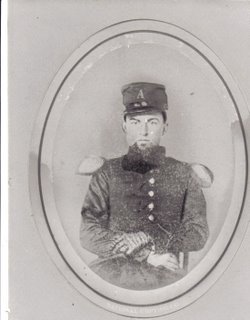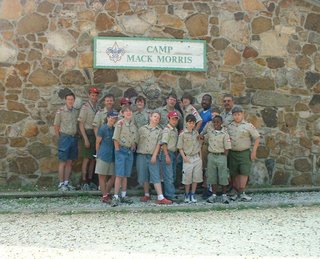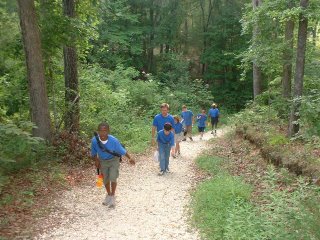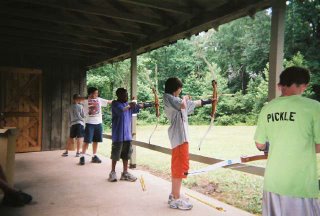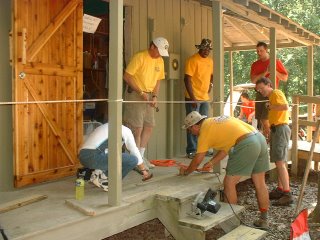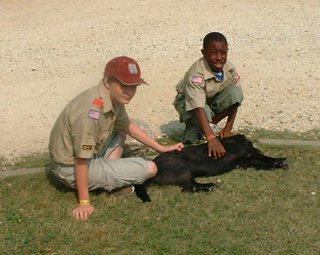Red Cross Water Safety Guidelines

General Water Safety Tips
Learn to swim. The best thing anyone can do to stay safe in and around the water is to learn to swim. Always swim with a buddy; never swim alone. The American Red Cross has swimming courses for people of any age and swimming ability. To enroll in a swim course, contact your local Red Cross chapter.
Swim in areas supervised by a lifeguard.
Read and obey all rules and posted signs.
Children or inexperienced swimmers should take precautions, such as wearing a U.S. Coast Guard-approved personal floatation device (PFD) when around the water.
Watch out for the dangerous “too’s” – too tired, too cold, too far from safety, too much sun, too much strenuous activity.
Set water safety rules for the whole family based on swimming abilities (for example, inexperienced swimmers should stay in water less than chest deep).
Be knowledgeable of the water environment you are in and its potential hazards, such as deep and shallow areas, currents, depth charges, obstructions and where the entry and exit points are located. The more informed you are, the more aware you will be of hazards and safe practices.
Pay attention to local weather conditions and forecasts. Stop swimming at the first indication of bad weather.
Use a feet-first entry when entering the water.
Enter headfirst only when the area is clearly marked for diving and has no obstructions.
Do not mix alcohol with swimming, diving or boating. Alcohol impairs your judgment, balance, and coordination, affects your swimming and diving skills, and reduces your body's ability to stay warm.
Know how to prevent, recognize, and respond to emergencies.
Boating
Learn to swim. The best thing anyone can do to stay safe in and around the water is to learn to swim. This includes anyone participating in any boating activity. The American Red Cross has swimming courses for people of any age and swimming ability. To enroll in a swim course, contact your local Red Cross chapter.
Alcohol and boating don't mix. Alcohol impairs your judgment, balance, and coordination -- over 50 percent of drownings result from boating incidents involving alcohol. For the same reasons it is dangerous to operate an automobile while under the influence of alcohol, people should not operate a boat while drinking alcohol.
Look for the label: Use Coast Guard-approved life jackets for yourself and your passengers when boating and fishing.
Develop a float plan. Anytime you go out in a boat, give a responsible person details about where you will be and how long you will be gone. This is important because if the boat is delayed because of an emergency, becomes lost, or encounters other problems, you want help to be able to reach you.
Find a boating course in your area (Red Cross, U.S. Power Squadron, the U.S. Coast Guard Auxiliary, US Sailing, etc) -- these courses teach about navigation rules, emergency procedures and the effects of wind, water conditions, and weather.
Watch the weather: Know local weather conditions and prepare for electrical storms. Watch local news programs. Stop boating as soon as you see or hear a storm.
Lakes and Rivers
Learn to swim. The best thing anyone can do to stay safe in and around the water is to learn to swim--this includes adults and children. The American Red Cross has swimming courses for people of any age and swimming ability. To enroll in swim course, contact your local Red Cross chapter.
Select a supervised area. A trained lifeguard who can help in an emergency is the best safety factor. Even good swimmers can have an unexpected medical emergency in the water. Never swim alone.
Select an area that is clean and well maintained. A clean bathhouse, clean restrooms, and a litter-free environment show the management’s concern for your health and safety.
Select an area that has good water quality and safe natural conditions. Murky water, hidden underwater objects, unexpected drop-offs, and aquatic plant life are hazards. Water pollution can cause health problems for swimmers. Strong tides, big waves, and currents can turn an event that began as fun into a tragedy.
Make sure the water is deep enough before entering headfirst. Too many swimmers are seriously injured every year by entering headfirst into water that is too shallow. A feet first entry is much safer than diving.
Be sure rafts and docks are in good condition. A well-run open-water facility maintains its rafts and docks in good condition, with no loose boards or exposed nails. Never swim under a raft or dock. Always look before jumping off a dock or raft to be sure no one is in the way.
Avoid drainage ditches and arroyos. Drainage ditches and arroyos for water run-off are not good places for swimming or playing in the water. After heavy rains, they can quickly change into raging rivers that can easily take a human life. Even the strongest swimmers are no match for the power of the water. Fast water and debris in the current make ditches and arroyos very dangerous.
Tubing and Rafting
Always wear a Coast Guard-approved life jacket.
Do not overload the raft.
Do not go rafting after a heavy rain.
When rafting with a tour company, make sure the guides are qualified. Check with the local chamber of commerce for listings of accredited tour guides and companies.
Learn to swim. The best thing anyone can do to stay safe in and around the water is to learn to swim. This includes anyone participating in any water sport. The American Red Cross has swimming courses for people of any age and swimming ability. To enroll in a swim course, contact your local Red Cross chapter.
Know local weather conditions. Make sure the water and weather conditions are safe. Because water conducts electricity, it is wise to stop swimming, boating, or any activities on the water as soon as you see or hear a storm. Also, heavy rains can make certain areas dangerous.
Water Skiing
Wear a Coast Guard-approved life jacket.
Be sure the boat and ski equipment are in good shape.
Always turn the boat motor completely off when you approach a fallen skier.
Watch the water ahead of you at all times.
Have an extra person aboard to watch and assist the skier.
Run parallel to shore and come in slowly when landing. Sit down if coming in too fast.
Use proper hand signals to signal boat operator.
Do not ski at night or in restricted areas.
Learn to swim. The best thing anyone can do to stay safe in and around the water is to learn to swim. This includes anyone participating in any water sport. The American Red Cross has swimming courses for people of any age and swimming ability. To enroll in a swim course, contact your local Red Cross chapter.
Know local weather conditions. Make sure the water and weather conditions are safe .Because water conducts electricity, it is wise to stop swimming, boating or any activities on the water as soon as you see or hear a storm. Also, heavy rains can make certain areas dangerous.





